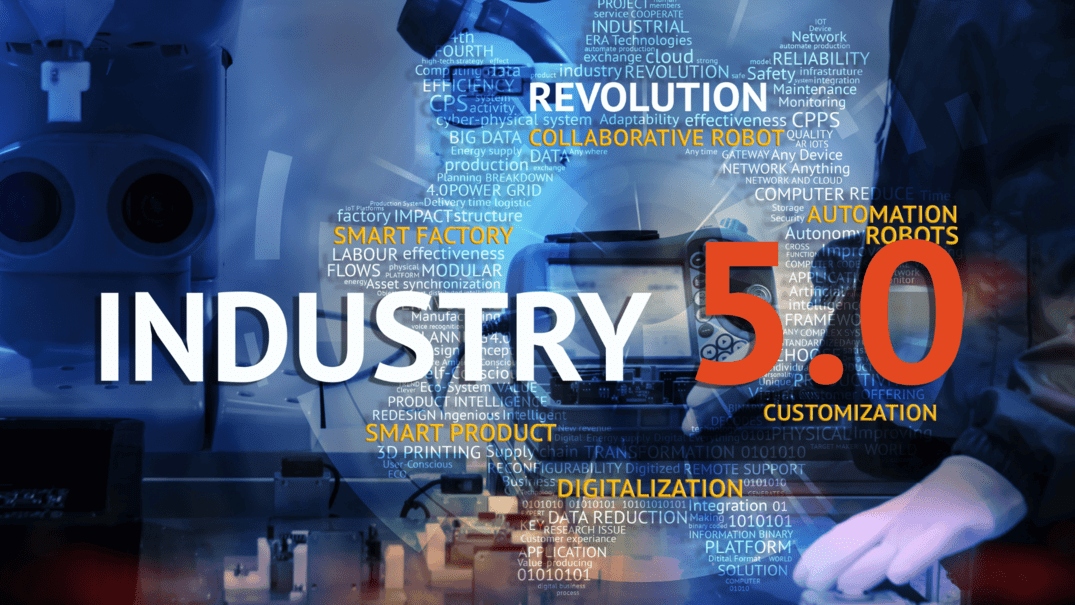Have you ever watched a science fiction movie and wondered if robots could collaborate with humans? What is Industry 5.0, you ask? Imagine an industrial revolution where machines don't replace people but work alongside them, enhancing their capabilities and creating more value than either could alone.
This isn't the stuff of fantasy or a far-off future; it's happening now, dramatically accelerating our production processes and transforming manufacturing today. It's about adding that essential human touch to technology, integrating big data with cognitive skills to enhance our production teams' collaboration.
We're not just talking lightweight materials assembled by robotic arms here; we're exploring how Industry 5.0 can help reduce carbon emissions, bring innovation to drug therapies, and save lives - all while keeping the human factor at its core!
Have you been puzzling over how your business fits into this picture? Let's delve deeper to find the answers together.
What is Industry 5.0
The term 'Industry 5.0' might seem like it's straight out of a sci-fi novel, but let me assure you, it's real and transforming our world today. This latest industrial revolution combines the human touch with advanced technology to create a new manufacturing paradigm.
At its core, Industry 5.0 brings together big data, artificial intelligence (AI), and cyber-physical systems in an innovative dance that enhances collaboration between humans and machines.
The Role of Collaborative Robots and Cyber-Physical Systems
You may ask how robots fit into this picture. Collaborative robots, or 'cobots' as affectionately known, are at the heart of Industry 5.0 innovations. These cobots work alongside their human counterparts, enhancing productivity while ensuring safety standards are met.
Cyber-physical systems play an equally important role by bridging the gap between digital models and physical operations through IoT concepts, thus creating more intelligent manufacturing processes that leverage AI capabilities and the unique creativity humans bring.
This synergy accelerates production rates and allows for greater customization catering to individual consumer needs – quite unlike traditional mass production methods traditionally focused on single product lines.
A Human-Centric Approach To Manufacturing Processes
In the world of Industry 5.0, where a human-centered approach is critical, there's a particular emphasis on the 'human factor' in manufacturing. Manufacturers are stepping up their game in machine-assisted human collaboration by blending technologies like industrial IoT and AI-based cognitive computing applications. This approach, often involving implementing machinery, is reshaping possibilities in modern industries, ranging from process manufacturing deals to cutting carbon emissions.
Consider Binance, a leading software company. CEO CZ, at the forefront of implementing Industry 5.0 principles, believes this new wave empowers people to be more than cogs in the production process; they can now be creative contributors.
So, what's the bottom line? Teams are working smarter, and businesses have the agility to respond to shifts in demand or unexpected scenarios quickly. It's clear that the current production process, with the integration of implementing machinery, is agile and adept at swiftly adapting to changes in requirements or unexpected events.
| Embracing Industry 5.0, we see a unique fusion of human touch and cutting-edge technology that redefines manufacturing methods. The spotlight is on 'cobots' and cyber-physical systems, enhancing teamwork between humans and machines to ramp up productivity without compromising safety. A keen focus on the 'human factor,' with AI-powered cognitive computing applications, gives industries unprecedented agility. |
Key Concepts in Industry 5.0
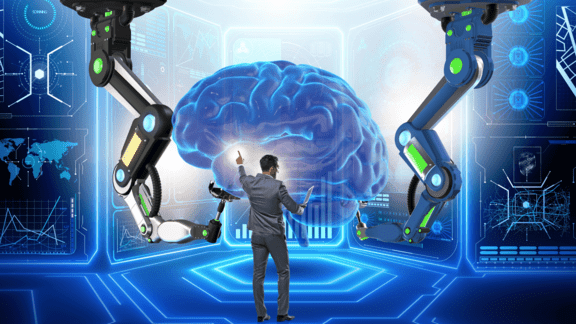
The emergence of Industry 5.0 has brought about groundbreaking technological concepts, driving us into a new manufacturing era.
Enhancing Collaboration in Production Teams
A key aspect is the emphasis on fostering greater transparency and improving team collaboration through decentralized data capture. This allows for seamless information sharing, thus helping production teams work smarter and more efficiently.
Plant process management (PPM) ensures safe operations by reconciling machine data with human context. PPM bridges the gap between industrial IoT applications and humans, enhancing how teams interact with machinery.
Solving Anomaly Situations with Industry 5.0 Technologies
Another standout concept involves addressing anomaly situations using innovative technologies like cognitive computing applications and design innovations specific to industry 5.0 scenarios.
Cognitive computing introduces artificial intelligence into manufacturing processes to tackle unexpected issues that might arise during production cycles — reducing downtime while maintaining high-quality standards.
Note:
As we navigate this uncharted territory together, remember there's no walking dead scenario here. Instead, think about it as bringing innovation back to life.
The importance of these intelligent systems can't be overstated - they provide real-time feedback, allowing for immediate action when anomalies occur or performance metrics dip below acceptable levels.
Through this increased control over manufacturing processes, we see radicalized production lines, resulting in enhanced efficiency without sacrificing the all-important human touch.
Transforming Manufacturing Processes
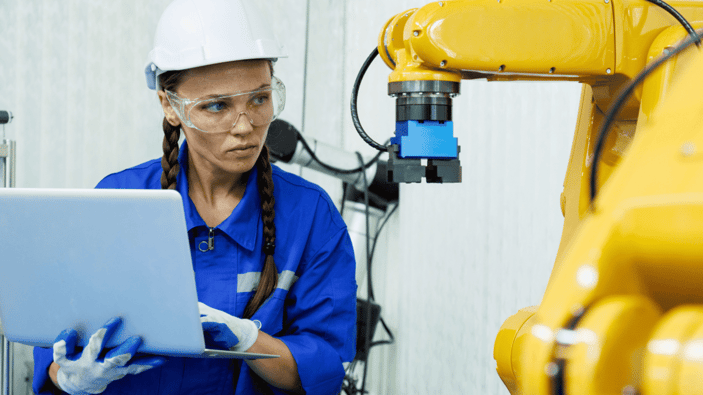
The dawn of Industry 5.0 is not just a new chapter but rewriting the entire book on manufacturing processes. It's more than machines and automation; it's about harnessing big data and fostering the human touch in this digital era.
Chemical Operations and Hazardous Manufacturing Processes
In an age where technology seems king, one might think humans have been sidelined in industrial operations. But Industry 5.0 puts us back at the center stage - especially when dealing with chemical operations and hazardous manufacturing processes.
No longer are we bystanders; now, we're active participants, collaborating with robots in cyber-physical systems for safer working conditions. For example, Boeing's new Airpower Teaming System gives pilots better control over unmanned aircraft during complex missions.
Manufacturing today isn't just about producing goods faster or cheaper - though those aspects remain important – it also focuses on reducing carbon emissions through lightweight materials while maintaining quality standards. Even traditionally focused sectors like the process manufacturing industry are adopting these changes brought by Industry 5.0 technologies.
This revolution has brought greater transparency into assembly lines across industries, from assembling parts to essential ingredient transformation in discrete manufacturing sectors such as pharmaceuticals and biotechnology [Research stats: Industry 5.0 will transform chemical, pharmaceutical, and biotechnology manufacturing].
Making Teams Work Smarter
Beyond individual tasks lies the power of teams to work smarter together using real-time insights offered by smart devices interconnected via Industrial IoT concepts incorporated within production processes. Eschbach, a software company, has demonstrated this by providing solutions that help production teams work smarter together.
Such innovations are not just about solving anomaly situations in manufacturing but also creating a radicalized production environment where humans and machines learn from each other to enhance collaboration and efficiency. It's like having Sherlock Holmes's intelligence paired with The Hulk's strength - an unbeatable combination.
It's essential to remember that advancement is a voyage, not just rushing toward the finish line but recognizing each step of the way. It's not about racing to an endpoint but appreciating every milestone.
| Industry 5.0 is revolutionizing manufacturing by marrying big data with the human touch, making us active participants in even the most hazardous processes. It's about smart teams working smarter through real-time insights and innovative solutions that foster collaboration between humans and machines. But remember, it's not a race - every milestone counts. |
Industry 5.0 in Various Sectors
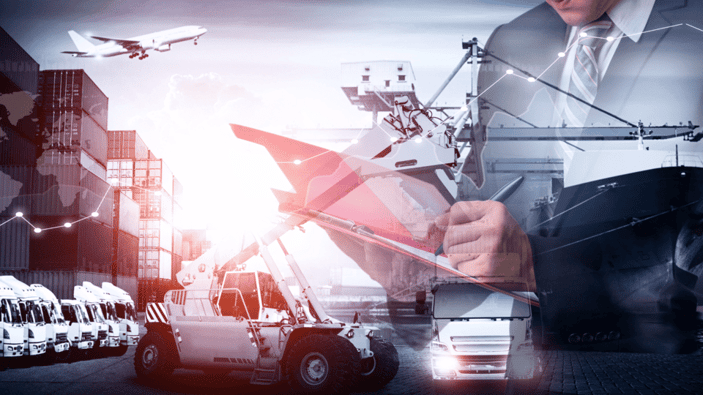
The rise of Industry 5.0 is causing a seismic shift across various sectors, dramatically accelerating the pace at which innovative drugs are discovered and developed. It's like bringing a fresh human touch to cold, clinical lab processes.
The Impact of Industry 5.0 on the Energy Sector
Innovative technologies introduced by Industry 5.0 are revolutionizing how we generate and use energy today.
Solar panels have become smarter with embedded artificial intelligence systems that help production teams work more efficiently while reducing carbon emissions - like giving your old solar setup an intelligent brain transplant.
And it doesn't stop there; cognitive computing applications now predict when these panels need maintenance before any significant problems occur - Imagine having your crystal ball for potential system breakdowns.
Biotechnology Manufacturing and Industry 5.0
In biotechnology manufacturing, cutting-edge automation systems provide greater transparency into complex production processes. For example, Eschbach's Shiftconnector® IO software lets operators see what's happening during drug development stages – imagine having X-ray vision into every detail.
This improved visibility can also speed up the introduction of radicalized production methods for new therapies, saving lives worldwide faster than you could say "Innovation." It's not too shabby if you ask me.
Industry 5.0 in the Pharmaceutical Industry
The pharmaceutical industry is another area where the effects of the Industrial Revolution can be seen. Firms use large datasets and cutting-edge computing programs to optimize their production processes.
With the help of Industry 5.0, drug therapies have become smarter - think of it as a high-tech upgrade for your medicine cabinet. This transformation has increased productivity and better safety in traditionally focused chemical operations.
The human factor plays a vital role in this shift towards smarter work practices, ensuring that the quality of drugs produced is top-notch. It's like having a world-class chef in every pharmaceutical kitchen.
| Industry 5.0 is revolutionizing various fields, including energy and pharmaceuticals. It's bringing a human touch to lab procedures and outfitting solar panels with AI smarts. This advancement also offers an unrivaled look into intricate biotech manufacturing techniques, speeding up the delivery of life-saving treatments. As for pharmaceuticals? Imagine your medicine cabinet getting a high-tech makeover. |
The Human Factor in Industry 5.0

Industry 5.0, the latest phase of the industrial revolution, puts humans back at the heart of production processes. It's a shift from automation to collaboration; it empowers workers with cognitive skills and integrates human creativity into innovative technologies.
Unlike its predecessor - Industry 4.0, which focused on machines and data analytics, Industry 5.0 emphasizes 'The Human Factor'. Here, we'll explore how this new era values our unique human abilities, such as critical thinking and problem-solving.
Cognitive Skills: The Heartbeat of Innovation
In Industry 5.0, cognitive skills aren't just essential but vital. This isn't about replacing people with robots or artificial intelligence (AI) but enhancing their roles within these systems.
This doesn't mean AI is out – far from it. Rather than making humans obsolete in manufacturing industries, AI can augment human decision-making capabilities, resulting in smarter solutions for complex problems.
Fostering Creativity Through Collaboration
Innovation blooms where creativity thrives – precisely what happens when humans are put back into the equation. In an industry dominated by collaborative robots (cobots) and cyber-physical systems (CPS), employees become creative contributors rather than mere machine operators.
Their ideas can bring innovation to traditionally focused manufacturing processes, giving them a whole new dimension.
A Human-Machine Network for Improved Outcomes
- Better understanding between teams leads to efficient outcomes.
- Human insight leads to detecting and fixing anomaly situations that may not be apparent through machine learning alone.
- The ability to adapt quickly in a rapidly changing industrial environment.
This synergy between human creativity and intelligent applications consisting of AI can lead to dramatic improvements in efficiency, productivity, safety, and even job satisfaction. In essence, Industry 5.0 helps production teams work smarter - not harder.
| Environments create a powerhouse of potential. It's about harmonizing human intelligence and artificial insight to boost efficiency, innovation, and overall productivity in manufacturing. By merging the best of both worlds - our natural talents with advanced tech - Industry 5.0 sets us up for an exciting future. |
Intelligent Plant Process Management

As we sail further into the Industry 5.0 era, Intelligent Plant Process Management (PPM) has become vital to safe and efficient operations in manufacturing sectors. PPM works by reconciling machine data with human context.
This means it helps production teams work smarter by creating an environment where machines better understand their operators, leading to more effective collaboration between humans and machines.
The beauty of this approach is that it combines big data analytics capabilities with industrial automation technologies. This allows us to bring innovation into traditionally focused areas like chemical operations or process industry setups.
The Role of Industrial IoT in PPM
In modern plant environments, Industrial Internet of Things (IoT) devices collect vast amounts of data from different parts of the manufacturing processes. But raw data alone isn't enough; you need intelligent applications with advanced algorithms to make sense of this avalanche.
Cognitive computing applications come into play here - they analyze machine-generated information and identify anomaly situations before they escalate into more significant issues, thus ensuring safety while dramatically accelerating productivity rates.
Solving Anomaly Situations Intelligently
Anomaly situations are those unexpected hiccups that can disrupt your smooth-running assembly line at any time – often when least expected. Cognitive computing shines here: these smart systems use past experiences to predict future occurrences, effectively solving anomaly situations before causing significant downtime.
This becomes especially crucial when dealing with hazardous manufacturing processes where safety is paramount.
Fostering Human-Machine Collaboration through Transparency
In a bid for greater transparency within production units, PPM provides clear insights into how machines operate and interact with the human workforce. This gives production teams the ability to make informed decisions quickly, as well as helping them work more productively.
Driving Efficiency in Chemical Operations
The impact of PPM is transformative, especially when you consider sectors like chemical operations that deal with assembled parts or essential ingredients daily.
| Industry 5.0 is revolutionizing manufacturing with Intelligent Plant Process Management (PPM). PPM helps machines 'understand' operators, enhancing collaboration and efficiency. By leveraging Industrial IoT and cognitive computing, it handles vast data loads and identifies anomalies before they become issues. With clear insights into machine operations, production teams make informed decisions in real-time. |
The Future of Industry 5.0
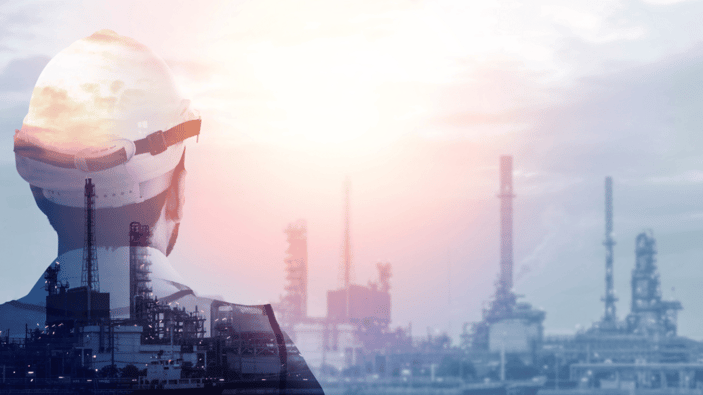
Industry 5.0, the fifth industrial revolution, is not a concept from science fiction but a reality we're fast approaching. It aims to bring back the human touch in manufacturing processes, blending advanced technology like big data and artificial intelligence with human creativity.
One key aspect is the role of collaborative robots or 'cobots.' They work alongside humans on production teams to enhance collaboration and reduce carbon emissions.
With Industry 5.0, cyber-physical systems interact seamlessly with their environment - an evolution focused on creating intelligent applications of people and machines working harmoniously.
Sustainable Development Goals and Production Teams Work Smarter
A notable goal of Industry 5.0 is to help society achieve sustainable development goals (SDGs) today. This includes using lightweight materials for products instead of traditional heavy ones, which are more challenging to recycle or dispose of safely.
Besides that, industry experts such as Binance CEO CZ foresee dramatic improvements in manufacturing efficiency due to advancements brought by greater transparency into traditionally opaque process industries.
This leads us to how Industry 5.0 helps production teams work smarter, enabling workers through technologies such as cognitive computing design innovations, which make them more efficient at their jobs and increase overall productivity levels within companies.
All these steps help contribute towards reducing our global carbon footprint - one small step at a time.
The Human Element
In this new era, humans will no longer be just operators but creative contributors who use innovative solutions to solve anomaly situations that arise during complex tasks.
For instance, innovative drugs developed via biotechnology manufacturing are already saving lives and bringing innovation to drug therapies. Imagine what more we can achieve when humans and machines work together.
As Industry 5.0 continues to evolve with the integration of advanced technologies like industrial IoT concepts into various sectors, including software companies and chemical operations - it is expected that manufacturing today will be dramatically accelerated.
Businesses need to begin making preparations immediately. It's crucial not to wait.
| Industry 5.0 is revolutionizing manufacturing by marrying advanced tech with human creativity, focusing on intelligent and sustainable production. Collaborative robots or 'cobots' work alongside humans, making processes more efficient and reducing carbon emissions. Humans become creative contributors using innovative solutions to tackle complex tasks, boosting productivity in industries from biotech to software companies. So don't wait - embrace this change today. Start harnessing the power of Industry 5.0 for your business now. |
Conclusion
Industry 5.0 is a revolutionary era that combines humans and machines to push the limits of manufacturing, generating value in new ways.
From enhancing team collaboration with decentralized data capture to addressing anomaly situations using cognitive computing applications - Industry 5.0 is shaping our future right now!
We've explored how this revolution affects various sectors, bringing innovations in drug therapies and making chemical operations safer while keeping the human factor at its core.
In understanding what Industry 5.0 is, successful businesses will embrace these advancements yet keep people central to their strategy. No matter how advanced our technology gets, nothing can replace the creativity and insight of the human mind!
 For immediate assistance, please call us at (512) 328-3235
For immediate assistance, please call us at (512) 328-3235
